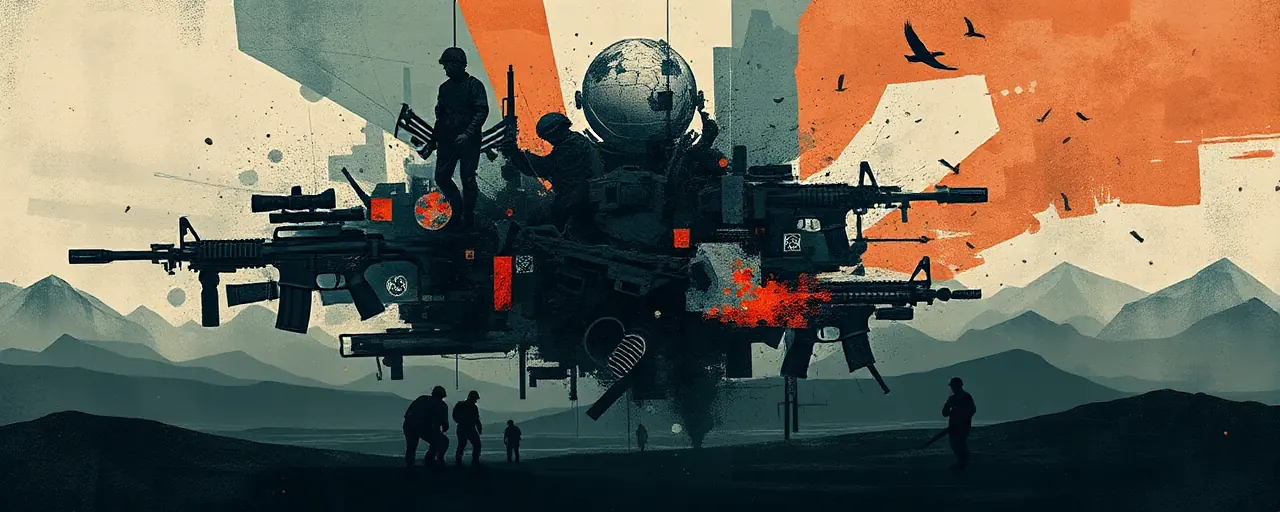A Hero’s Last Stand
April 4, 2003, wasn’t just another day in the Iraq War. It was the day Army Sgt. 1st Class Paul Ray Smith stared down death at Baghdad’s international airport, shielding over 100 American soldiers from a relentless enemy assault. Armed with grit, a .50-caliber machine gun, and an unshakable resolve, Smith turned the tide against 100 insurgents, firing through three boxes of ammo before a fatal wound claimed him at 33. His story isn’t just a footnote in military history; it’s a blazing testament to the kind of courage that built this nation, and a reminder of what we’re losing when we let such sacrifices fade into the background.
Smith didn’t stumble into heroism. A Tampa native turned combat engineer, he lived by a code of discipline that made him a stickler for the rules, a trait his troops revered in the chaos of battle. Leading Company B of the 11th Engineer Battalion, he’d drilled his unit to perfection, clearing roads and defusing threats ahead of the 3rd Infantry Division’s push into Iraq. When insurgents stormed his position that day, his preparation paid off, not in glory for himself, but in lives saved. That’s the raw, unvarnished truth of valor, and it’s high time we stopped treating it like a feel-good headline.
The Unsung Backbone of Victory
Combat engineers like Smith don’t get the Hollywood treatment, but they’re the sinew holding our military together. Breaching minefields, building bridges, neutralizing IEDs, these men and women carve paths to victory under fire. In Iraq and Afghanistan, their route clearance missions slashed insurgent ambushes, keeping troops alive against an enemy that hid behind every corner. Smith’s unit wasn’t just support; it was the tip of the spear, and his final act, manning that machine gun, crushed at least 50 attackers. The numbers don’t lie: his defiance turned a potential massacre into a triumph.
Yet, you won’t hear much about this from the chattering class in Washington or the media elites who’d rather dissect foreign policy than salute the grunts who execute it. They’ll drone on about diplomacy or the war’s messy end in 2021, ignoring the blood-and-guts reality of what men like Smith achieved. Baghdad fell five days after his stand, a domino that toppled Saddam’s regime. Dismissing that as coincidence is as naive as pretending America’s strength doesn’t rest on the shoulders of its warriors.
A Legacy Worth Fighting For
Two years later, President George W. Bush handed Smith’s son, David, the Medal of Honor, the first of its kind in the Global War on Terrorism. Now, with the National Medal of Honor Museum open in Arlington, Texas, since March 2025, we’ve got a shrine to these giants. It’s more than a building; it’s a call to action, with exhibits that don’t just recount heroics but demand we live up to them. Smith’s name echoes there, alongside over 3,500 recipients, a legacy etched in restored artifacts and stories that hit you square in the chest.
Families like Smith’s carry a double burden: pride in their loved one’s sacrifice, and the gut punch of loss no pension or flag can soften. His widow, Bridgit, and their kids got the honors, the $1,600 monthly check, the Arlington plot, but what about the nation they served? Some argue these awards are enough, a nice pat on the back before we move on. That’s a coward’s cop-out. Recognition without resolve is hollow; we owe these heroes a country that matches their mettle, not one that shrugs at their graves.
The Cost of Forgetting
Smith’s death wasn’t an anomaly. The Global War on Terrorism chewed through two decades, from 9/11 to the Afghanistan pullout, leaving scars on soldiers and families alike. PTSD, depression, suicide, these aren’t buzzwords; they’re the toll of combat, amplified when a nation turns its back. Studies peg healthcare costs in the billions, but the real price is in the veterans who can’t shake the ghosts, or the kids who grow up without a parent. Smith’s unit knew that weight; medics fought for 30 minutes to save him, a desperate bid that failed but underscored their bond.
Contrast that with the hand-wringing over war’s purpose. Plenty questioned Iraq, pointing to no WMDs or the rise of ISIS as proof it was all for naught. They miss the forest for the trees. Smith didn’t die for a weapons stash; he died for the men beside him, for a mission that toppled a dictator and gave millions a shot at freedom. Doubters can clutch their pearls, but the liberation of Baghdad, sparked by his stand, stands as hard evidence of what’s possible when America commits.
Time to Step Up
Paul Ray Smith’s story isn’t a museum piece to gawk at; it’s a mirror. He gave everything, not for medals or headlines, but because duty demanded it. The Tampa middle school bearing his name, the Army Research Lab tribute, the annual engineering medal, these are starts, not finishes. We’ve got a duty too: to build a nation worthy of that sacrifice, one that doesn’t just honor heroes on plaques but fights for the principles they died for, strength, freedom, and a backbone that doesn’t bend.
America’s at a crossroads. We can keep sleepwalking through tributes, letting bureaucrats and talking heads dilute what men like Smith stood for, or we can wake up. His 100 saved lives, his 50 downed enemies, they’re not stats; they’re a challenge. The Medal of Honor Museum opened its doors to remind us, but it’s on us to walk through them, not as spectators, but as heirs to a legacy we can’t afford to squander.
